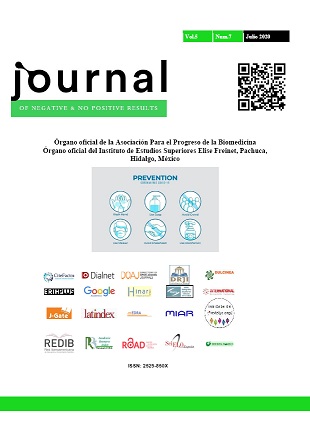Infographics in the health sciences: application to the sexually transmitted diseases
DOI:
https://doi.org/10.19230/jonnpr.3483Keywords:
Infographics, Sexually Transmitted Diseases, Access to Information, Educational and Promotional Materials, CopyrightAbstract
Objective. To describe the infographics on sexually transmitted diseases (STDs) recovered through Google Images® and analyze their information and possibilities of use.
Methods. Cross-sectional descriptive study. The infographics were obtained by searching with the terms "infographic", "sexually transmitted diseases" and "sexually transmitted infections". To select the images for the study, a sample size was calculated by estimating parameters in an infinite population. The date of the search was 15 of March 2018.
Results. 386 infographics were selected for each term (diseases/infections), discarding 198 (20.4%) images due to documentary noise; 718 infographics (99.5%) were informative. Most of them, came from personal blogs, 129 (16.7%) or individual, 54 (7.0%). They presented some type of license 31 (4.0%) infographics. More than half (Median = 0.4 Mpx) of the analyzed images presented adequate resolution.
Conclusions. It was possible to recover infographics about STDs but with a high "documentary noise" that was mostly informative. There was a low institutional affiliation of these images that did not have a convenient use of Creative Commons licenses, although most of them presented a good image resolution.
Downloads
References
González-Pacanowski T, Medina P. Comunicación online en el sector salud: Valor de la infografía. El Prof Inf. 2009;18(4):413-20.
Brigas J, Gonçalves J, Milheiro S. Infographics in the education context. En: Sousa Reis C, Tadeu P, Paira T, editores. Proceedings Book for the Conference on Enabling Teachers for Entrepreneurship Education. Guarda, Portugal: Guarda Polytechnic Institute; 2013. p. 51-5.
Serra J. No hay estética sin ética [Internet]. Santa Coloma de Cervelló, España: Scribd Inc; 2017 [citado 5 de octubre de 2018]. Disponible en: https://bit.ly/2E1mZrQ
Sanz-Lorente M, Castejón-Bolea R. Infografías en las ciencias de la salud: aplicación al cuidado domiciliario. Hosp Domic. 2018;2(2):67-78.
Guzmán-Cedillo Y, Lima-Villeda N, Ferreira-Rosa S. La experiencia de elaborar infografías didácticas sobre diversidad sexual. Rev Lat Comun Soc. 2015;(70):961-81.
McCrorie AD, Donnelly C, McGlade KJ. Infographics: Healthcare Communication for the Digital Age. Ulster Med J. 2016;85(2):71-5.
Buljan I, Malički M, Wager E, Puljak L, Hren D, Kellie F, et al. No difference in knowledge obtained from infographic or plain language summary of a Cochrane systematic review: three randomized controlled trials. J Clin Epidemiol. 2018;86-94.
Sanz-Lorente M, Wanden-Berghe C, Castejón-Bolea R, Sanz-Valero J. Web 2.0 Tools in the Prevention of Curable Sexually Transmitted Diseases: Scoping Review. J Med Internet Res. 2018;20(3):e113.
Blázquez Barba M, Gómez Romero D, Frontaura Fernández I, Camacho Ojeda A, Rodríguez Salas FM, Toriz Cano H. Uso de Internet por los adolescentes en la búsqueda de información sanitaria. Aten Primaria. 2018;50(9):547-52.
Valdez Montero C, Benavides Torres RA, González y González V, Onofre Rodríguez DJ, Castillo Arcos L. Internet y conducta sexual de riesgo para VIH/SIDA en jóvenes. Enferm Glob. 14(38):151-9.
Kiernan M, Oppezzo MA, Resnicow K, Alexander GL. Effects of a methodological infographic on research participants’ knowledge, transparency, and trust. Health Psychol. 2018;37(8):782-6.
López-del-Ramo J, Montes-Vozmediano M. Construcción comunicativa del reportaje infográfico online de calidad: Elementos constitutivos. El Prof Inf. 2018;27(2):322-30.
Sanz-Valero J, Castiel LD, Wanden-Berghe C, Juan Quilis V. Internet y la búsqueda de información en salud pública: desde la relevancia hacia la «revelancia». Gac Sanit. 2006;20(2):159-60.
Savall R. Enfermedades de transmisión sexual. Aten Primaria. septiembre de 2005;36(5):278-9.
Royal KD, Erdmann KM. Evaluating the readability levels of medical infographic materials for public consumption. J Vis Commun Med. 2018;1-4.
Gilaberte Y, Nagore E, Arias-Santiago S, Moreno D. ¿Vale una imagen más que mil palabras? La figura resumen o graphical abstract. Actas Dermosifiliogr. 2016;107(7):545-6.
Cairo A. Visualización de datos: una imagen puede valer más que mil números, pero no siempre más que mil palabras. El Prof Inf. 2017;26(6):1025-8.
Guardiola-Wanden-Berghe R, Sanz-Valero J, Wanden-Berghe C. Eating Disorders Blogs: Testing the Quality of Information on the Internet. Eat Disord. 2010;18(2):148-52.
World Health Organization. Infographics [Internet]. Geneva, Switzerland: WHO; [citado 5 de octubre de 2018]. Disponible en: https://bit.ly/2ODunxD 20. Melero Melero R. Reutilización, significado implícito en el acceso abierto (Open Access). Hosp Domic. 2017;1(3):123-8.
Ribes i Guàrdia X. Edición y presentación multimedia: fundamentos de la digitalización y del tratamiento de imágenes y sonidos. Bellatera, Barcelona: Servei de Publicacións, Universitat Autònoma de Barcelona; 2002.
Published
Issue
Section
License
All accepted originals remain the property of JONNPR. In the event of publication, the authors exclusively transfer their rights of reproduction, distribution, translation and public communication (by any sound, audiovisual or electronic medium or format) of their work. To do so, the authors shall sign a letter transferring these rights when sending the paper via the online manuscript management system.
The articles published in the journal are freely used under the terms of the Creative Commons BY NC SA license, therefore.
You are free to:
Share — copy and redistribute the material in any medium or format
Adapt — remix, transform, and build upon the material
The licensor cannot revoke these freedoms as long as you follow the license terms.
Under the following terms:
Attribution — You must give appropriate credit, provide a link to the license, and indicate if changes were made. You may do so in any reasonable manner, but not in any way that suggests the licensor endorses you or your use.
NonCommercial — You may not use the material for commercial purposes.
ShareAlike — If you remix, transform, or build upon the material, you must distribute your contributions under the same license as the original.
No additional restrictions — You may not apply legal terms or technological measures that legally restrict others from doing anything the license permits.

This work is licensed under a Creative Commons Attribution-NonCommercial-ShareAlike 4.0 International License

























